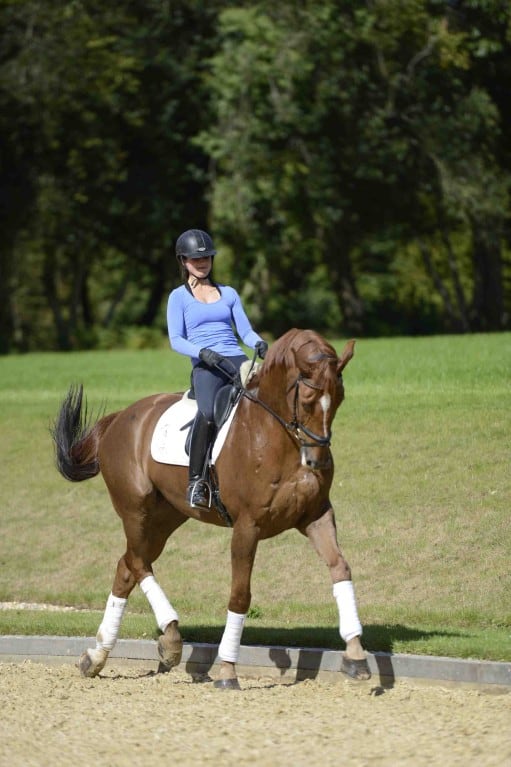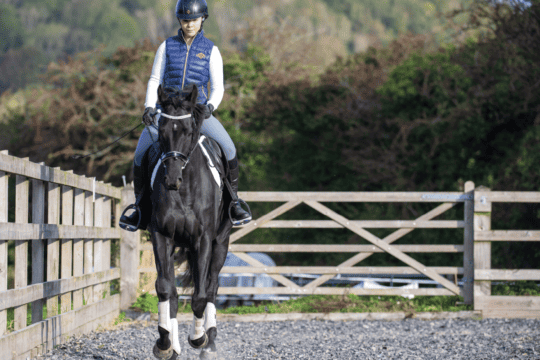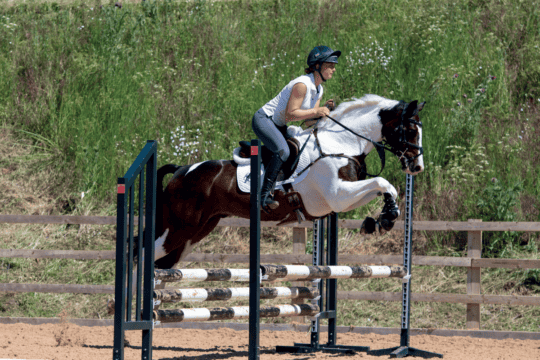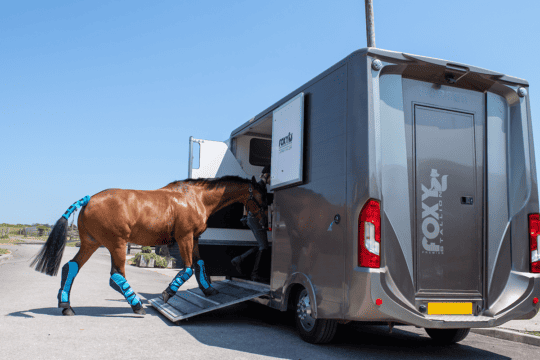-
Riding Schooling and Training
-
Health and Veterinary
-
Management
-
Mind Matters
-
Buying and Selling
-
Insurance Advice
FAQs
As your horse starts to improve in his flatwork, you can start to fine-tune things

A horse working in a good rhythm will take even steps in all three of his paces. Next time you’re riding, listen to your horse’s footfalls to see whether or not he is in a good rhythm.
A horse may be uneven in his paces for the following reasons:
- Laziness
- He is nervous or tense and tends to hurry as a result
- The rider is out of balance with the horse, tense or nervous
- The rider is pushing the horse out of his natural rhythm
- The horse has a physical problem
- He is young or green and, therefore, still unbalanced
As long as you have ruled out a physical problem, then you can begin to teach your horse how to work rhythmically.
Start by checking your own riding. Are you remembering to breathe in a steady, relaxed rhythm? If you’re not always 100 per cent confident riding your horse, then having someone on the ground can be a big comfort.
Training guide
Make sure that your horse works rhythmically at all times
1. On the turn!
Riding big turns and circles can help with rhythm, as opposed to riding lots of straight lines, which gives the horse a chance to hurry off.
2. Marker points
BHSIntSM Louise Bland advises placing two markers on the long side of the school and riding between them several times. This helps check that the number of steps is always the same.
3. Counting strides
Louise Bland says: “Listening to music while I ride helps me keep my horse in a good rhythm. It doesn’t have to be music that fits exactly with your horse’s paces, but something with a very definite rhythm can help you feel if your horse is speeding up or slowing down.”
Expression
This word describes getting more activity in the paces. When you watch horses at top-level dressage, they have the ultimate expression. And although you may not wish to do the higher levels of dressage, a more expressive horse can give you a great feel for jumping and hacking, too! Here are some tips to help you work on your expression as a pair.
Louise Bland says
“Hack out with a friend on a horse with a bigger trot than your horse’s and go for long trots uphill. You need to do it regularly for a few weeks to see a difference.”
Carl Hester says
“Ride sitting trot in a good working trot and, without losing rein contact, ask for a few bigger steps. Then come back to working trot again.”
Did you know that…
some horses naturally work in a good rhythm, while others need more help?
Balancing act
Balance goes hand-in-hand with rhythm – a horse who is in good balance is more likely to work in an even rhythm. And one who has a good, natural rhythm is more likely to be well-balanced.
Horses learn to balance themselves at a young age – in fact, just an hour-and-a half after being born, they can be up on their feet running around! When a rider gets on a horse, it upsets the horse’s natural balance, which means that the horse has to learn to balance all over again – this time carrying a passenger. It is actually very important for a horse to learn to balance, as in the wild, the one who fails to stay on his feet is the one most likely to be eaten by predators! So what is good balance and how do you get it?
Chris Bartle explains
“A young or untrained horse’s balance tends to be ‘on the forehand’, then with basic training, you help the horse to achieve horizontal balance. And as the training progresses, the horse learns to carry more weight on his hind legs. This balance is not only important in order for the horse to cope with the more advanced dressage movements, but can improve his showjumping and will make him more sure-footed out hacking, too!”
Lessons in lungeing
Lungeing your horse teaches him to balance himself, but only when it’s done well. If your lungeing isn’t quite up to scratch, then book yourself a few lessons with your trainer.
Short ‘n’ sweet
It takes patience and time to teach a horse to balance under the weight of the rider, so if you try to force the issue, you could end up injuring your horse. Nicky Moffatt says she finds transitions really useful, especially with young horses.
“I ride some of the three and four-year-olds at my yard, and obviously because of their age, they are still quite unbalanced and tend to rush on a bit. I work them on large circles a lot of the time, but transitions are what really help.
“One thing I have found, though, is that doing a few transitions makes no difference at all – I literally have to do two or three on every circle. Obviously with young horses, you have to be very careful not to overdo things, and I find regular but short sessions work best for them physically and mentally.”
Obedience test
You can’t teach your horse new tricks until you have his full attention. But remember that you will only get his, if you give him yours!
When you are riding, avoid chatting to your friends or answering your mobile phone. Make your schooling sessions your time with your horse. That way, your training will progress much quicker and you will build a better relationship with each other, too.
Clear training
Be consistent with your training, so that you always ask for the same thing in the same way. This is easier said than done, as Louise Bland points out: “I am sometimes a bit ‘guilty’ of not being consistent with my training. Some days, I feel really motivated to work Cino hard and other days – say I’ve had a long day in the office – I might be more lenient with him. I have to make a conscious effort to be consistent and when I do, I get a much better tune from my horse.”
Take this scenario. You ask your horse to go forward to trot from walk, but he ignores you. You ask him again more firmly and he trots, but in his own time, and he fits in four or five shuffly ‘I’m not quite walking or trotting’ steps first. If you ignore this, then your horse will do the same again next time. But if you bring him forward to walk and ask him to trot with more obvious aids, and a tap with the whip, you should find he is more responsive.
The ultimate aim is to teach your horse to go on his own, rather than relying on your legs to say keep going!
Top tip
Nick Gauntlett: “Horses are creatures of habit and learn best from repetition.”
Training guide
Is your horse switched on and listening to you?
1. Switch on
Your horse is more likely to be obedient to your aids if he is listening to you. A good exercise to get his full attention is to ride a three- or four-loop serpentine from one end of the school to the other, making a walk transition as you cross the centre line each time.
2. Spook-busting
Work your horse away from spooky objects at first, to allow him a chance to settle.
3. Good grounding
Ensure your horse listens to you on the ground and under saddle. Put it to the test. Does he back up and walk on when you ask him to?
Top tip
Expect the same from your horse out hacking as you do in the school, so he is clear what you want.















